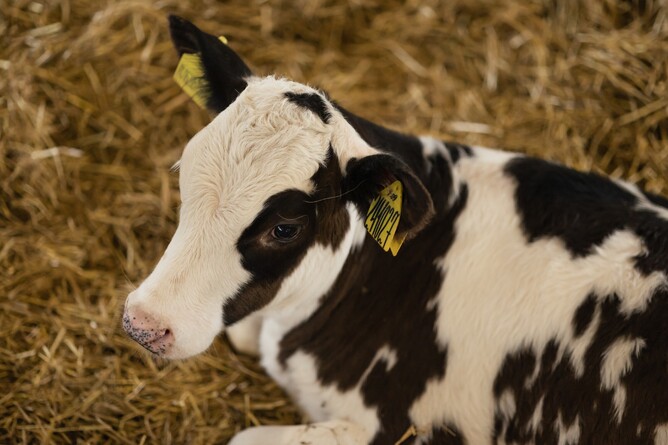Every year, outbreaks of scours occur in calf pens – sometimes on farms with a history of issues, and other times on farms that have never experienced problems before. Fortunately, there are a few strategies we can use to manage calves that reduce the risk of scours and improve sick calves chances of survival.
Colostrum feeding is crucial for calf health. Ideally every newborn calf should drink 3-4 litres of ‘gold’ colostrum (from a cow's first milking) within six hours of being born to ensure high levels of IgG absorption. IgG are antibodies present in colostrum that the cow has developed in response to diseases she has been exposed to or vaccinated against, that then help boost the calf’s immune system in the early days of life.
The calf’s gut lining begins to lose its ability to absorb IgG after six hours and almost completely stops by 24 hours. Cows that leak milk before calving tend to have lower IgG concentrations in their colostrum, and the IgG levels can vary significantly between individual cows.
The level of IgG in colostrum can be measured using a refractometer. If you’d like more information on using one of these, your vet is here to help.
Scour vaccines given to cows before calving can improve the immunity of their calves against scours, but effective colostrum management is still essential to ensure optimal protection.
If you are purchasing calves at four days old, sourcing them from a farm known for good colostrum management will pay off. These calves tend to grow better and show greater resistance to scours compared to those bought from sale yards with no known health history.
Shed set up and management play a key role in reducing the spread of disease between calves. Solid partitions between pens help prevent the unwanted spread of scours through different pens. Ensure each pen has dry bedding, adequate ventilation, and is free from drafts to allow calves to use their energy for growth and disease resistance, rather than staying warm.
Having an ‘all-in all-out' system, where each pen is filled up with similar-aged calves that remain there until they move outside, helps prevent disease build up. This approach limits the cycling of pathogens through younger calves, lowering the risk of contamination reaching levels that trigger disease outbreaks.
When calves do have scours, quickly isolating them to a sick pen (where they remain until recovery) can help minimise disease spread.
Testing faecal samples to identify the specific cause of scours is valuable for guiding treatment and management plans. Treating calves with electrolytes to combat dehydration and replace lost minerals is very important.
In general, you get what you pay for with electrolyte solutions. High-quality products typically contain essential salts like potassium, components to balance the body’s acid-base levels, and an energy source that can aid in gut absorption. For scouring calves, alternating feeds of 2 litres of electrolytes and 2 litres of milk with 4 hours inbetween is an effective way to maintain hydration and energy.
A mildly dehydrated calf may require around 6 litres of fluid per day, while a severely dehydrated calf with large volumes of watery scours may need up to 10 litres of fluid daily. Keeping calves well hydrated supports vital body functions and strengthens the immune system, which is the key to recovery.
Since most causes of scours are viral, antibiotics are generally not recommended for treatment.
This isn’t a comprehensive list of considerations for calf pens or managing scours; clean pens, regular disinfecting, and strong biosecurity practices are also essential. But having healthy calves through good colostrum management is a great first step in preventing disease. And knowing what you are fighting, then treating aggressively with fluid replacement can help reduce the impact of an outbreak.
Looking after scouring calves is exhausting! If you’d like to discuss ways to reduce new cases or improve treatment outcomes in your specific situation this spring, please give us a call.

